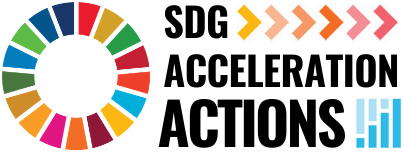YOUTH MENTAL HEALTH
(
Non-governmental organization (NGO)
)
#SDGAction43241
Description
The Global youth mental health awareness (the project) was developed in response to the growing need to communicate and engage with professionals and the youth of the community, to the issues associated with Youth Mental Health and the stigma associated with those individuals who may seek help. One of the key outcomes is to ensure that positive psychology becomes a household term; that ensures the youth of our community are including and not discriminated against.
The Project is to ensure that unique people with the same agenda (that includes international political leaders, youth activists, community leaders, allied health professionals) are able to discuss the most crucial issues facing the domain of Youth Psychology. The Project focuses on youth psychology, child psychology and child mental health outcomes, by amalgamating youths, youth activists, NGO’s, community groups and allied health practitioners from across many diverse backgrounds and nationalities, given youth mental health is not defined to any one nationality.
Requirements
The World Health Organization states that “there is no health without mental health”, highlighting the association between mental and physical health.
• Unfortunately, one in four young people experiences a mental health condition; and suicide is the leading cause of death for Australians aged 15 to 24.
• One in seven young Australians experience a mental health condition. Breakdown: 13.9% children and adolescents aged 4-17 years experienced a mental disorder between 2013-14, which is equivalent to an estimated 560,000 Australian children and adolescents.
• Suicide is the biggest killer of young Australians and accounts for the deaths of more young people than car accidents. Breakdown: 324 Australians (10.5 per 100,000) aged
Solution
The intention of The Project is to communicate the above statistics without bias or stigma. Frequently, youth are embarrassed to accept or recognise that many factors can affect one’s state of mental health and the need to seek help or actions to reduce those mental health effects. 1 in 4 people experience a mental health problem every year. Half of them say that the associated isolation and shame is worse than the condition itself (Time to change, 2018) Research from the National Survey of Mental Health Literacy and Stigma, shows that there are three main misconceptions when it comes to anxiety / depression. These are centred around the person who has anxiety / depression and how they believe others view their condition.
Proposal
Vision and Your Goals
Mission - The Mission of The Project, is to create a platform through …Community Forums for working on the perception of people towards Mental Health and Psychology.
Mission:
“To make psychology a household term and to be an advocate for raising awareness and improving youth emotional and mental health outcomes.”
“understanding the importance of youth mental health today for peace and development”
Vision -
• To make Psychology a household term.
• Mental Health Advocacy.
The Three Critical Aspects of Our Approach to Mental Health Include:
• Understanding mental health from a psycho-social perspective.
• Demonstrating the linkages between mental health, discrimination, poverty and access to justice.
• De-stigmatizing mental health issues and creating both a demand and a supply for mental health care amongst the most marginalized communities.
• Understanding Intergenerational trauma: Trauma is passed down from it’s first generation of survivors who directly experience or witness a traumatic projection, to future generations, particularly indigenous communities.
• Effective Methods of Mental Health Advocacy. How “easy” is it for the youth of today to access these advocacy services. By accessing these services, does it raise the level of anxiety that may exist within the person? How do we break this cycle?
SDGS & Targets
Goal 3
Ensure healthy lives and promote well-being for all at all ages
3.1
3.1.1
Maternal mortality ratio
3.1.2
Proportion of births attended by skilled health personnel
3.2
3.2.1
Under-five mortality rate
3.2.2
Neonatal mortality rate
3.3
By 2030, end the epidemics of AIDS, tuberculosis, malaria and neglected tropical diseases and combat hepatitis, water-borne diseases and other communicable diseases
3.3.1
Number of new HIV infections per 1,000 uninfected population, by sex, age and key populations
3.3.2
Tuberculosis incidence per 100,000 population
3.3.3
Malaria incidence per 1,000 population
3.3.4
Hepatitis B incidence per 100,000 population
3.3.5
Number of people requiring interventions against neglected tropical diseases
3.4
3.4.1
Mortality rate attributed to cardiovascular disease, cancer, diabetes or chronic respiratory disease
3.4.2
Suicide mortality rate
3.5
Strengthen the prevention and treatment of substance abuse, including narcotic drug abuse and harmful use of alcohol
3.5.1
Coverage of treatment interventions (pharmacological, psychosocial and rehabilitation and aftercare services) for substance use disorders
3.5.2
Alcohol per capita consumption (aged 15 years and older) within a calendar year in litres of pure alcohol
3.6
3.6.1
Death rate due to road traffic injuries
3.7
By 2030, ensure universal access to sexual and reproductive health-care services, including for family planning, information and education, and the integration of reproductive health into national strategies and programmes
3.7.1
Proportion of women of reproductive age (aged 15-49 years) who have their need for family planning satisfied with modern methods
3.7.2
Adolescent birth rate (aged 10-14 years; aged 15-19 years) per 1,000 women in that age group
3.8
Achieve universal health coverage, including financial risk protection, access to quality essential health-care services and access to safe, effective, quality and affordable essential medicines and vaccines for all
3.8.1
Coverage of essential health services
3.8.2
Proportion of population with large household expenditures on health as a share of total household expenditure or income
3.9
3.9.1
Mortality rate attributed to household and ambient air pollution
3.9.2
Mortality rate attributed to unsafe water, unsafe sanitation and lack of hygiene (exposure to unsafe Water, Sanitation and Hygiene for All (WASH) services)
3.9.3
Mortality rate attributed to unintentional poisoning
3.a
3.a.1
Age-standardized prevalence of current tobacco use among persons aged 15 years and older
3.b
Support the research and development of vaccines and medicines for the communicable and non-communicable diseases that primarily affect developing countries, provide access to affordable essential medicines and vaccines, in accordance with the Doha Declaration on the TRIPS Agreement and Public Health, which affirms the right of developing countries to use to the full the provisions in the Agreement on Trade-Related Aspects of Intellectual Property Rights regarding flexibilities to protect public health, and, in particular, provide access to medicines for all
3.b.1
Proportion of the target population covered by all vaccines included in their national programme
3.b.2
3.b.3
Proportion of health facilities that have a core set of relevant essential medicines available and affordable on a sustainable basis
3.c
3.c.1
Health worker density and distribution
3.d
Strengthen the capacity of all countries, in particular developing countries, for early warning, risk reduction and management of national and global health risks
3.d.1
International Health Regulations (IHR) capacity and health emergency preparedness
3.d.2
Percentage of bloodstream infections due to selected antimicrobial-resistant organisms
SDG 14 targets covered
Deliverables & Timeline
Resources mobilized
Partnership Progress
Feedback
Action Network

Timeline
Entity
SDGs
Region
- Africa
- Asia and Pacific
- Europe
- Global
- Latin America and the Caribbean
- North America
- West Asia
Geographical coverage
Other beneficiaries
More information
Countries

Contact Information
JUDE EDIAE, PROF

